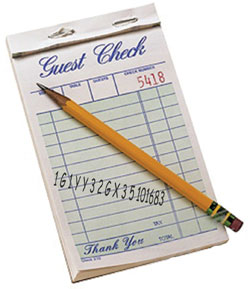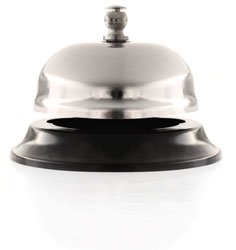If you find yourself working in the parts distribution industry, eventually your customers will trust you to know auto parts — every bolt hole, technical spec and dimension. But as everyone knows, looks can be deceiving and even through two parts might look the same, the inside might be a totally different story.

So how do you know? It’s all in the Vehicle Identification Number (VIN), and if you can’t decode it for your customers, you might end up sending out the wrong parts.
Did You Know…
The VIN can be found in a variety of places: as a plate at the base of the windshield on the driver’s side, in the engine compartment or elsewhere on the body or frame.
Returned product, often chalked up as a defect, can usually be traced back to incorrect product or application information at the time of the order. And you can’t rely on your customers to have the answers. They might know the correct year, make and model, but there is often much more to it than that. Even within the same year, make and model, subtle design alterations can result in part number changes that aren’t obvious.
Using the VIN to look up parts can make the ordering process much more error-free since the VIN includes all the information needed to identify everything about the vehicle. If a technician or service writer calls a store with incorrect information, or they guess about production dates or vehicle-equipped accessory items, often this incorrect information will result in a return.
Without the VIN, parts professionals sometimes need to visually match parts (physically or with on-screen product images). In other cases, the parts professional must search for a casting number for cross-referencing. At its essence, the VIN eliminates guessing by both the technician and the parts store.
Other Reference Options
There are, of course, other options — catalog prompts, cross references, etc., but the ability to do VIN look-ups within the e-cat itself just makes the process easier and more accurate. For the tech, it’s an issue of time. If the technician doesn’t know the vehicle he’s been assigned to service, he doesn’t have to waste time searching inside the engine or put the vehicle on a lift. Think about all the time a tech takes to figure out the specifics of the vehicle he’s working on — does it have A/C? Is it a four-or-six cylinder? Just popping the VIN in the catalog will tell you all that information.
Catalog suppliers such as Wrenchead and Activant added VIN look-ups to their e-cats as far back as 2005. They did it because at its essence, VINs are the very DNA of a vehicle, and if you can unlock it, you can find important information related to where the vehicle was made, engine size and other vital pieces of information essential to proper parts sales.
Of course, identifying the vehicle year and engine code is often necessary when looking up ignition, fuel, emission and engine components, so it’s important to know how to use the VIN code because vehicle manufacturers often make running production changes in mid-year. Import manufacturers, for example, do this frequently. An application listing may say that a part only fits vehicles up to a certain VIN or build date.
Checking IDs
If your store doesn’t have VIN look-up capability, you may have to use other methods, such as referring to a casting number, an OEM label or manufacturing tag. Using the OEM part number, and then cross-referencing it with aftermarket numbers, allows you to correctly identify the application so you can find the right replacement part.
The emissions decal is another source of information. It identifies the engine displacement and calibration code, along with other emission system information. It may also list the type of spark plugs required. This decal is usually found on the underside of the hood, but may be located elsewhere in the engine
compartment.
Visually comparing parts can also help in the identification process. If possible, compare the original part to the replacement part to make sure bolt holes and other fastener locations, fittings, etc. are the same. Any dimension, critical to the installation of the part, should match the original. This includes shaft and pulley diameters, spline counts, thread pitch and length, gasket mating surfaces and other physical connections.
Body Codes
Vehicle manufacturers also use their own body family codes that are based on common vehicle platforms or model lines. Vehicles within a given product line typically share common mechanical components, but external body panels and trim may be different.
This applies mostly to General Motors and Chrysler vehicles.
For example, GM “W-body” applications include the Chevrolet Lumina, Pontiac Grand Prix, Oldsmobile Cutlass Supreme and Buick Regal. Chrysler “LH-body” applications include the Concorde, Intrepid, LHS, Vision and 300M.
When matching paint colors, the OEM paint code from the Vehicle Identification Plate (VIP) is needed. The VIP plate may be located under the hood, on the firewall, in the door jamb or trunk. There is no standard location for this information.
Compare the code with the listings in a color book for the year, make and model of the vehicle. If possible, compare a paint chip to the vehicle itself because the vehicle may have been repainted.
Popular colors on recent models are usually available ready-mixed in pints, quarts or gallons, but colors for older vehicles, less popular models or custom colors have to be custom mixed. VINs are not something that’s needed with each and every order, and most counter professionals know when they need more information. It’s the kind of information only a VIN can provide. Having the ability to look up the VIN correctly in the catalog provides greater speed and accuracy for both the repairer and parts provider.

VIN Codes Defined
• The first character identifies the country of origin — U.S. (1 , 4 or 5), Canada (2), Mexico (3), Japan (J), Korea (K), England (S), Germany (W), Italy (Z)
• Second VIN digit specifies the manufacturer. Audi (A), BMW (B), Buick (4), Cadillac (6), Chevrolet (1), Chrysler (C), Dodge (B), Ford (F), GM Canada (7), General Motors (G), Honda (H), Jaguar (A), Lincoln (L), Mercedes Benz (D), Mercury (M), Nissan (N), Oldsmobile (3), Pontiac (2 or 5), Plymouth (P), Saturn (8), Toyota (T), Volvo (V).
• Third digit indicates the vehicle type or manufacturing division.
Note: The next five digits, four through eight, describe the vehicle. The specific use of these digits differs from one manufacturer to another. Examples includes common code elements:
• The fourth digit contains a code that represents the vehicle’s weight, horsepower or both.
• The fifth digit often identifies the platform of the vehicle, i.e., van, pickup truck, trailer, sedan…
• The sixth digit can be a special code used by the manufacturer or vehicle model.
• The seventh digit identifies body type, such as four-door, two-door, hatchback or convertible.
• The eighth digit is for information about the engine, i.e., number of cylinders and engine displacement.
• The ninth digit is a VIN accuracy check digit, verifying the previous VIN numbers.
• The tenth digit tells the model year. 1988 (J), 1989 (K), 1990 (L), 1991 (M), 1992 (N), 1993 (P), 1994 (R), 1995 (S), 1996 (T), 199 7(V), 1998 (W), 1999 (X), 2000 (Y), 2001(1), 2002 (2), 2003 (3), etc.
• The eleventh digit reveals the assembly plant for the vehicle.?
• The twelfth to seventeenth VIN digits indicate the sequence of the vehicle for production as it rolled of the manufacturers assembly line.
Note: The specifics needed for decoding the characters of the VIN can be found in the service manual for the vehicle.


